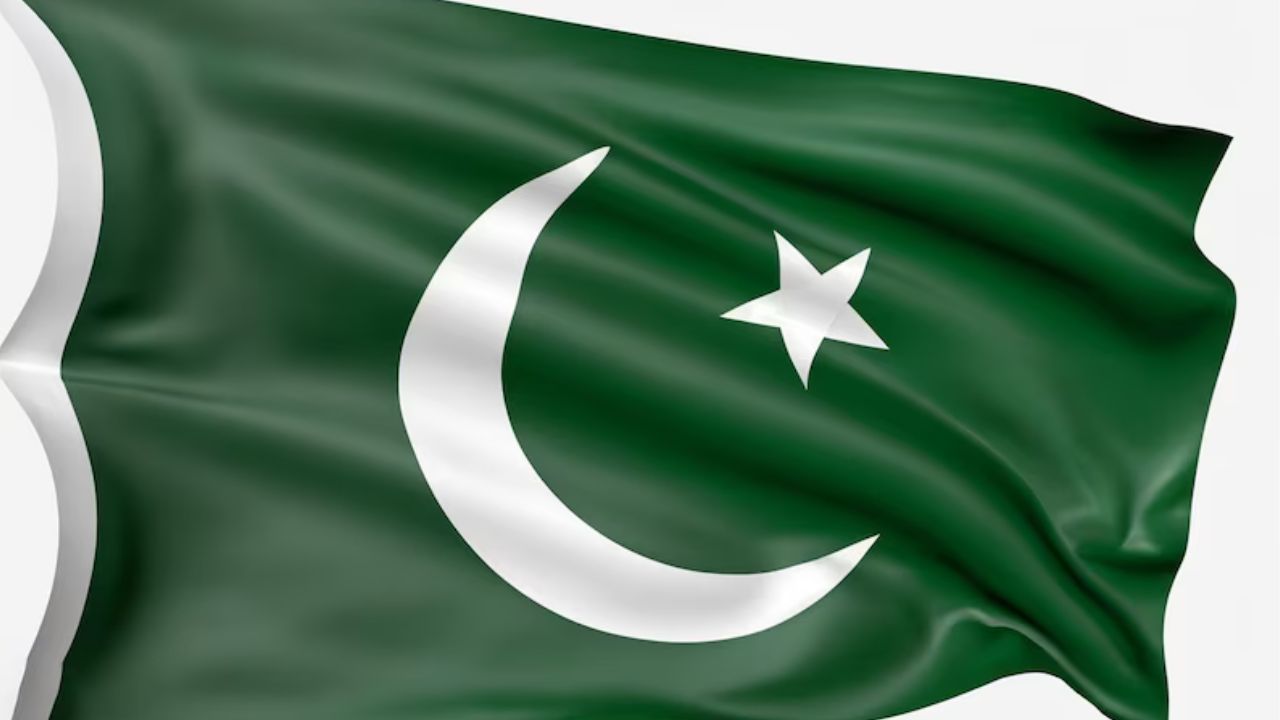Flag
The Symbolism and History of the Pakistani Flag

The Pakistani flag, which represents pride and identity for the nation, deeply ingrains symbolism and history in its past It is more than just a piece of fabric; it is a symbol of a country’s ideals, challenges, and goals.
Design of the Pakistani Flag
The two main components of the Pakistani flag’s remarkable design are a white stripe and a green field. The country’s predominant Muslim population is represented by the green field, which dominates the flag. The white stripe, which is located on the hoist side, stands for religious minorities and highlights how crucial it is to include and safeguard them.
History of the Pakistani Flag
Pakistan adopted the flag only a few days before it earned independence from British authority, on August 11, 1947. The flag of the All-India Muslim League, which was instrumental in the independence campaign, served as the model for its design. The adoption of the flag, a representation of freedom and sovereignty, signaled a fresh start for the country.
Symbolism in Detail
Green Color
The flag’s vibrant green hue signifies more than just a color; it carries profound symbolism. It represents wealth and reflects the predominantly Muslim population of Pakistan. Throughout history, Islam has linked the color green with spirituality and peace, making it a powerful symbol of the nation’s identity.
White Stripe
The flag’s white stripe stands for Pakistan’s religious minorities. It represents a dedication to minorities’ rights and inclusion as well as peace and their place in the country.
Crescent and Star
In the Islamic world, the crescent and star are emblematic figures. The star stands for light and knowledge, and the crescent for advancement. Collectively, they represent the aspirations of the Pakistani people toward progress and enlightenment.
The Flag’s Role in Pakistan’s Independence
During the independence movement, people rallied around the flag as a powerful symbol of hope and aspiration. It became the focal point for Muslims in South Asia striving to achieve their own nation. Visionary leaders like Pakistan’s founder, Muhammad Ali Jinnah, actively promoted this emblem of unity and identity, galvanizing support and steering the nation towards independence.
The Flag in Modern Pakistan
These days, people fly the Pakistani flag everywhere, including at state functions, open houses, and national celebrations. Pakistanis take great pleasure in it and unite around it as a symbol of their shared beliefs and the nation’s sovereignty.
Protocol and Etiquette
People must fly the Pakistani flag according to certain rules. They should raise it at government buildings, offices, and educational institutions. They should also display it on important occasions like national holidays. The Pakistani people treat the flag with utmost care, reflecting their deep regard for it.
Global Recognition
The Pakistani flag is widely acknowledged and serves as the nation’s representative abroad. It promotes a sense of pride and belonging among the Pakistani diaspora by acting as a reminder of their history and identity.
Conclusion
FAQs
What do the colors of the Pakistani flag represent?
The white stripe stands for peace and religious minorities, while the color green represents the majority of Muslims.
When was the Pakistani flag adopted?
On August 11, 1947, the flag was adopted, shortly before Pakistan attained independence.
Who designed the Pakistani flag?
The All-India Muslim League’s flag served as the design’s inspiration, and prominent figures from the independence struggle contributed to it.
How is the Pakistani flag used in official ceremonies?
Hoisting the flag at government buildings, educational institutions, and during national holidays signifies its importance in formal and public gatherings.
What is the importance of the Pakistani flag to the diaspora?
The flag fosters a sense of pride and belonging among the diaspora by serving as a representation of their ancestry and identity.

-

 Celebrity11 months ago
Celebrity11 months agoJulia Rejean Moorhead: A Trailblazer in Her Field
-

 News11 months ago
News11 months agoThe Ever-Evolving World of News:Global Events Unfolding Today
-

 INFORMATION12 months ago
INFORMATION12 months agoUnderstanding Information: Its Role and Impact in Our Lives
-

 Sports11 months ago
Sports11 months agoGonzaga Basketball: The Rise of a College Hoops Powerhouse
-

 Sports11 months ago
Sports11 months agoThe Incredible Benefits of Sports: Boost Your Life on All Fronts
-

 Business11 months ago
Business11 months agoRogue Trader Rotate Grand Strategist:The Dynamic World of Trading
-

 Health12 months ago
Health12 months agoThe Ultimate Guide to Health: Tips and Strategies for a Healthier
-

 Technology9 months ago
Technology9 months agoFascinating Facts About Astronauts:The Ultimate Guide